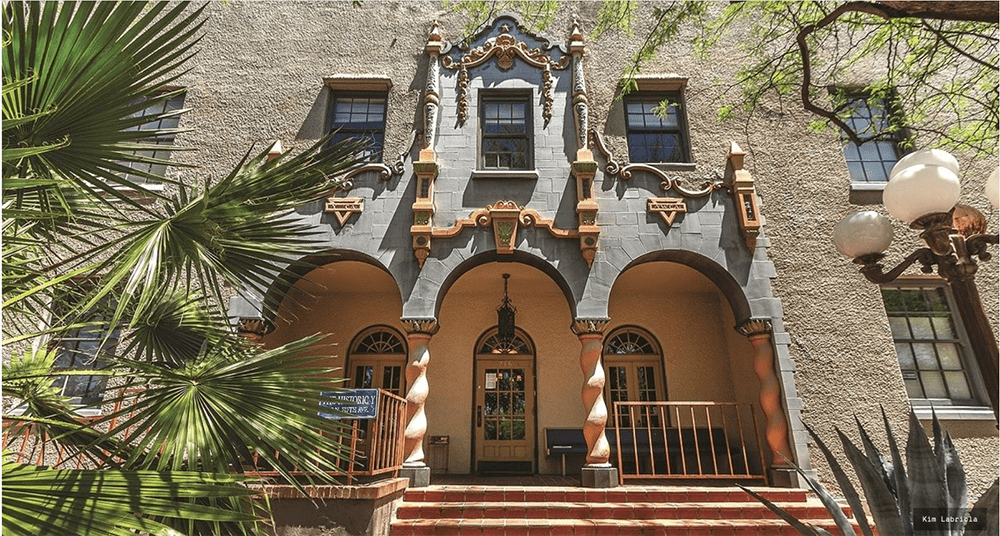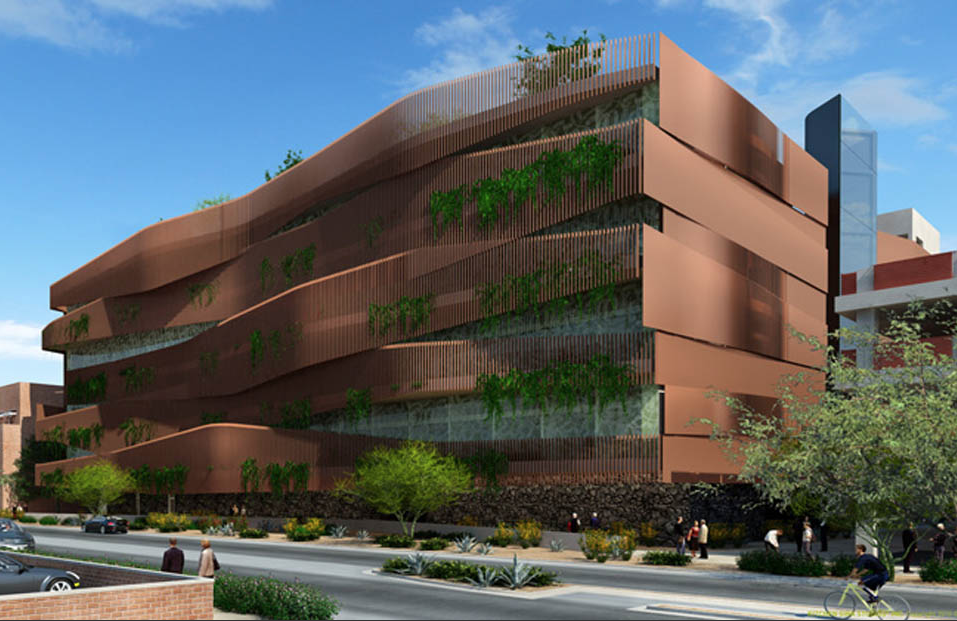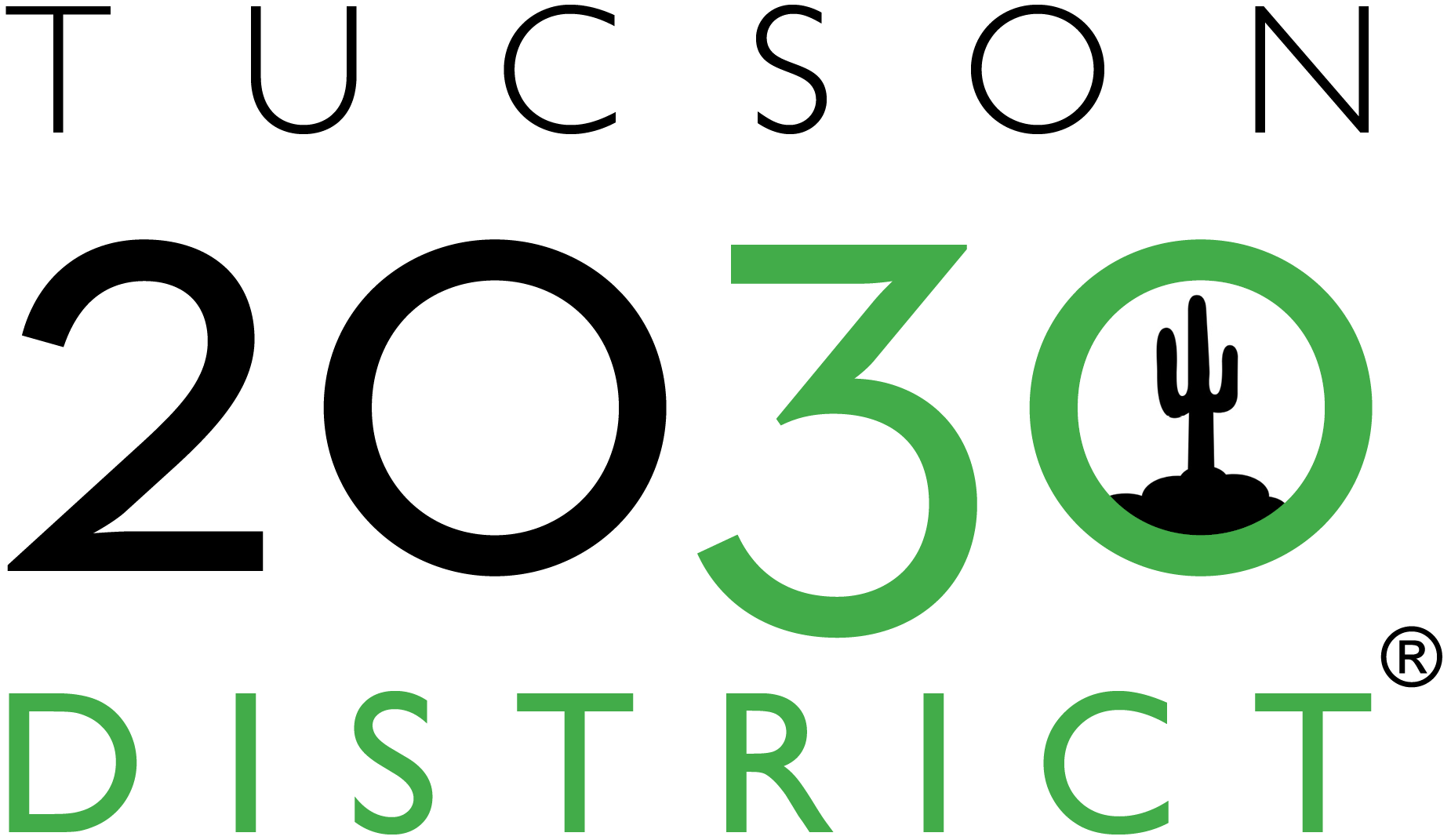Photo by Kim Labriola, National Trust for Historic Preservation

Historic Y — Center for the Arts, Education, and the Environment
Designed by Annie Graham Rockfellow, the first woman registered as an architect in Arizona, the YWCA Building of Tucson — now known as the Historic Y — continues its mission of service, today housing arts, cultural, and environmental organizations, as well as a popular performing arts theater.
A classic example of the Spanish Colonial Revival style popular in the West, the building features elegant arches and columns. It was built circa 1929.
The Tucson 2030 District participated in the Historic Y retrofit project and concluded from energy audits and on-site analysis that the building exceeded the 50% reduction goal set by the 2030 Challenge.
“Careful management has resulted in excellent maintenance practices for all energy equipment,” the District report concluded — and this was before the Historic Y installed a 65.21 kW solar system, which provides 60% of the building’s electrical use.

Environment & Natural Resources 2 — University of Arizona
Completed in 2015, the Environment & Natural Resources 2 building — better known as ENR2 — is a showcase of sustainable design. Built upon a parking lot, the building’s five-story curving facade hints of what is to come on the inside: an atrium reminiscent a narrow desert “slot canyon,” with each deck dripping with plants.
LEED Platinum certified, the building boasts a water harvesting tank that distributes water to the landscaping on all five levels. The offices are cooled with chilled beams. In all, the building is a model of what can be created to conserve without sacrificing its utilitarian need for classrooms, offices, and meeting spaces.
The Tucson 2030 District work with its partner, the University of Arizona, on the building audit produced few surprises: Overall, ENR2 realizes a 62% energy-use reduction rate and a 40% reduction in water usage — an important milestone for a region in drought.
